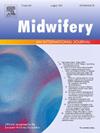重新想象肯尼亚的产科分诊:一种新型结构化产科分诊模式对护士-助产士能力和患者等待时间的影响-一项准实验研究
IF 2.5
3区 医学
Q1 NURSING
引用次数: 0
摘要
问题:肯尼亚的产妇和围产期死亡率和发病率仍然很高,部分原因是第三次延迟。结构化的产科分诊框架已被证明可以改善全球孕产妇和新生儿的预后,而轶事证据表明,肯尼亚没有正式的产科分诊框架。目的在肯尼亚基安布县试行结构化综合产科分诊模式(SIOTEL),并评估其对护士-助产士产科分诊能力和患者等待时间的影响。方法采用准实验设计。研究对象包括40名助产士护士和来自两家医院产房的455名患者档案。干预是一个3量表的客户评估工具。进行了一项基线调查,以探讨护士-助产士在产科分诊方面的能力,以及病人的等待时间。然后开发了该模型,对护士助产士进行了培训,并实施了该工具。通过末端线调查来评估模型对研究变量的影响。使用STATA对定量数据进行分析;使用t检验来检查平均数与使用表格和图表呈现的数据之间的差异。SIOTEL的实施提高了助产士的产科分诊知识、实践和患者等待时间,但对他们在干预设施中的态度没有影响。结论该研究强调了结构化产科分诊在能力和患者等待时间方面的显著改善。报告方法作者遵循SQUIRE 2.0指南本文章由计算机程序翻译,如有差异,请以英文原文为准。
Re-imagining obstetric triage in Kenya: Effects of a novel structured obstetric triage model on nurse-midwives’ competencies and patient waiting time - A quasi experimental study
Problem
Maternal and perinatal mortality and morbidity remains high in Kenya, partly attributable to the third delay.
Background
Structured frameworks for obstetric triage have been shown to improve maternal and neonatal outcomes globally, and anecdotal evidence suggests that there is no formal framework for obstetric triage in Kenya.
Aim
To pilot a Structured Integrated Obstetric Triage Model (SIOTEL) in Kiambu County Kenya and assess its effect on nurse-midwives obstetric triage competencies and patient waiting time.
Methods
A quasi-experimental design was applied. Study population included 40 nurse-midwives and 455 patient files from labour wards of the two hospitals. The intervention was a 3-scale client assessment tool. A baseline survey was conducted to explore the nurse-midwives’ competencies on obstetric triage, as well as the patient waiting time. The model was then developed, training was conducted for the nurse-midwives, and the tool implemented. An end line survey was conducted to assess effect of the model on the study variables. Quantitative data was analysed using STATA & t-test was used to check for differences between the means and the data presented using tables and graphs.
Findings
Implementing the SIOTEL resulted in improved midwives’ obstetric triage knowledge, practices and patient waiting time with no effect noted on their attitudes in the intervention facility.
Conclusion
The study highlights the significant improvement in competencies and patient waiting time resulting from structured obstetric triage.
Reporting method
The authors have adhered to SQUIRE 2.0 Guidelines
求助全文
通过发布文献求助,成功后即可免费获取论文全文。
去求助
来源期刊

Midwifery
医学-护理
CiteScore
4.50
自引率
7.40%
发文量
221
审稿时长
13.4 weeks
期刊介绍:
Midwifery publishes the latest peer reviewed international research to inform the safety, quality, outcomes and experiences of pregnancy, birth and maternity care for childbearing women, their babies and families. The journal’s publications support midwives and maternity care providers to explore and develop their knowledge, skills and attitudes informed by best available evidence.
Midwifery provides an international, interdisciplinary forum for the publication, dissemination and discussion of advances in evidence, controversies and current research, and promotes continuing education through publication of systematic and other scholarly reviews and updates. Midwifery articles cover the cultural, clinical, psycho-social, sociological, epidemiological, education, managerial, workforce, organizational and technological areas of practice in preconception, maternal and infant care.
The journal welcomes the highest quality scholarly research that employs rigorous methodology. Midwifery is a leading international journal in midwifery and maternal health with a current impact factor of 1.861 (© Thomson Reuters Journal Citation Reports 2016) and employs a double-blind peer review process.
 求助内容:
求助内容: 应助结果提醒方式:
应助结果提醒方式:


